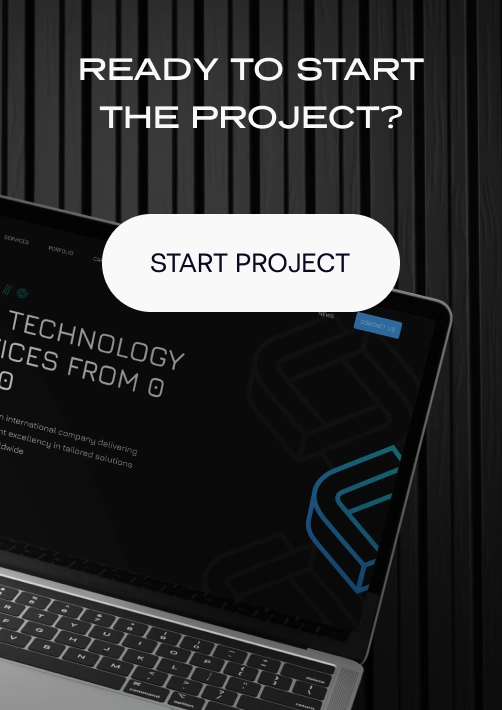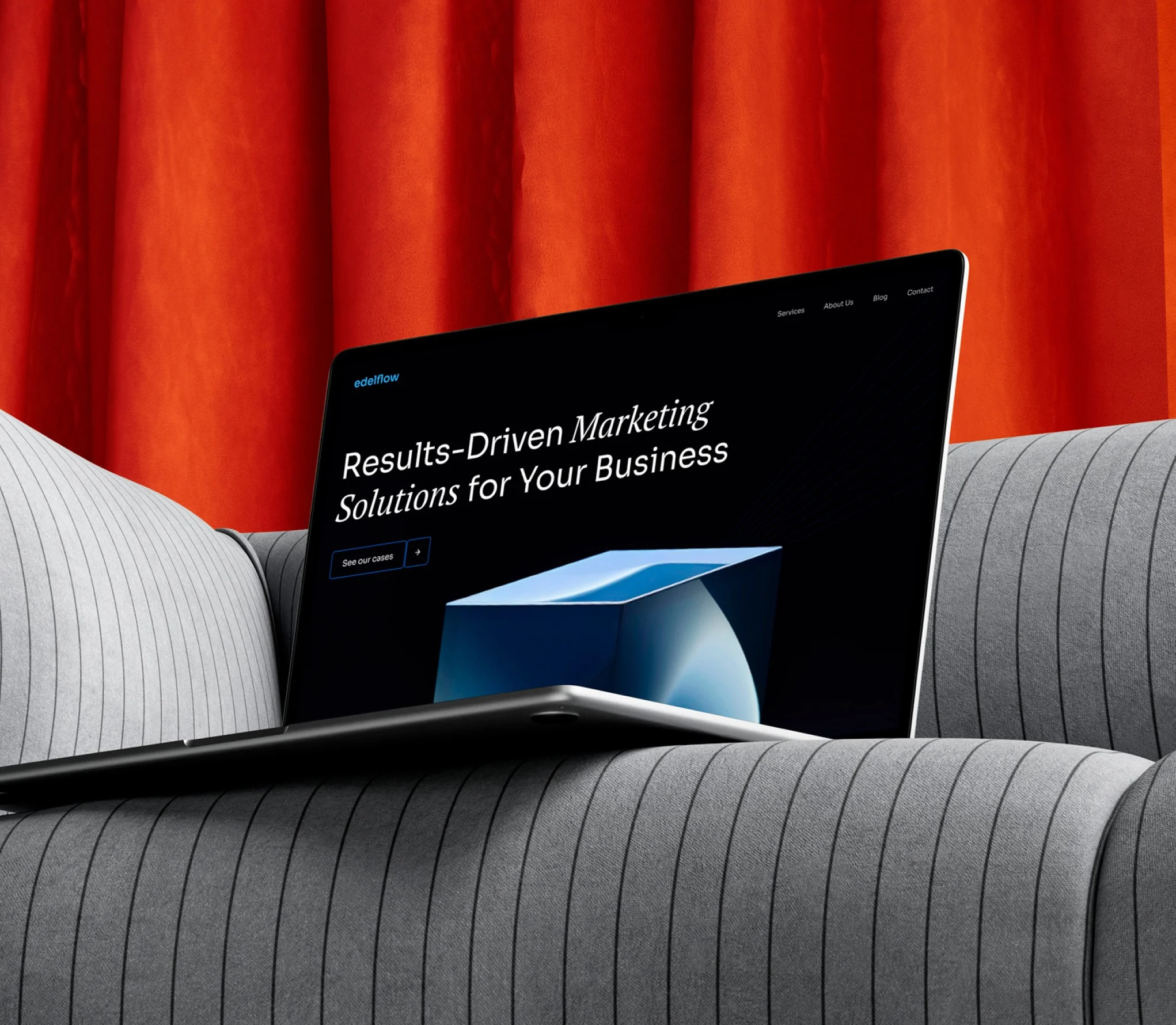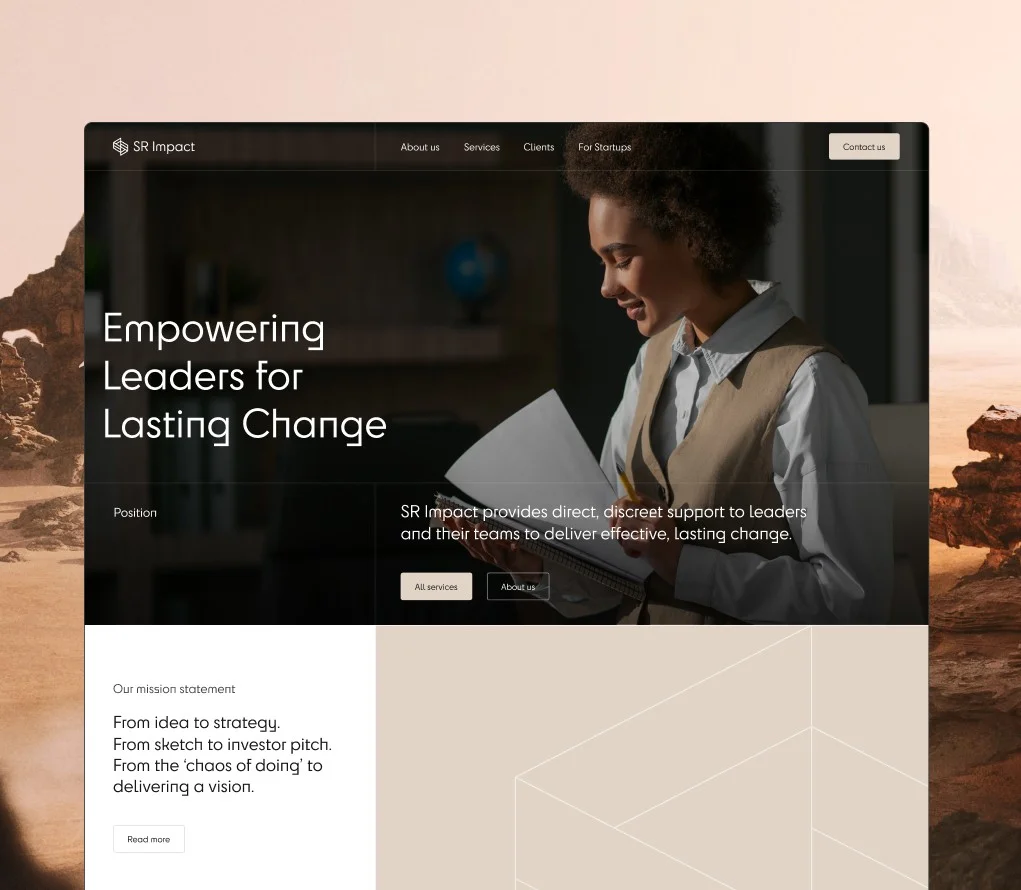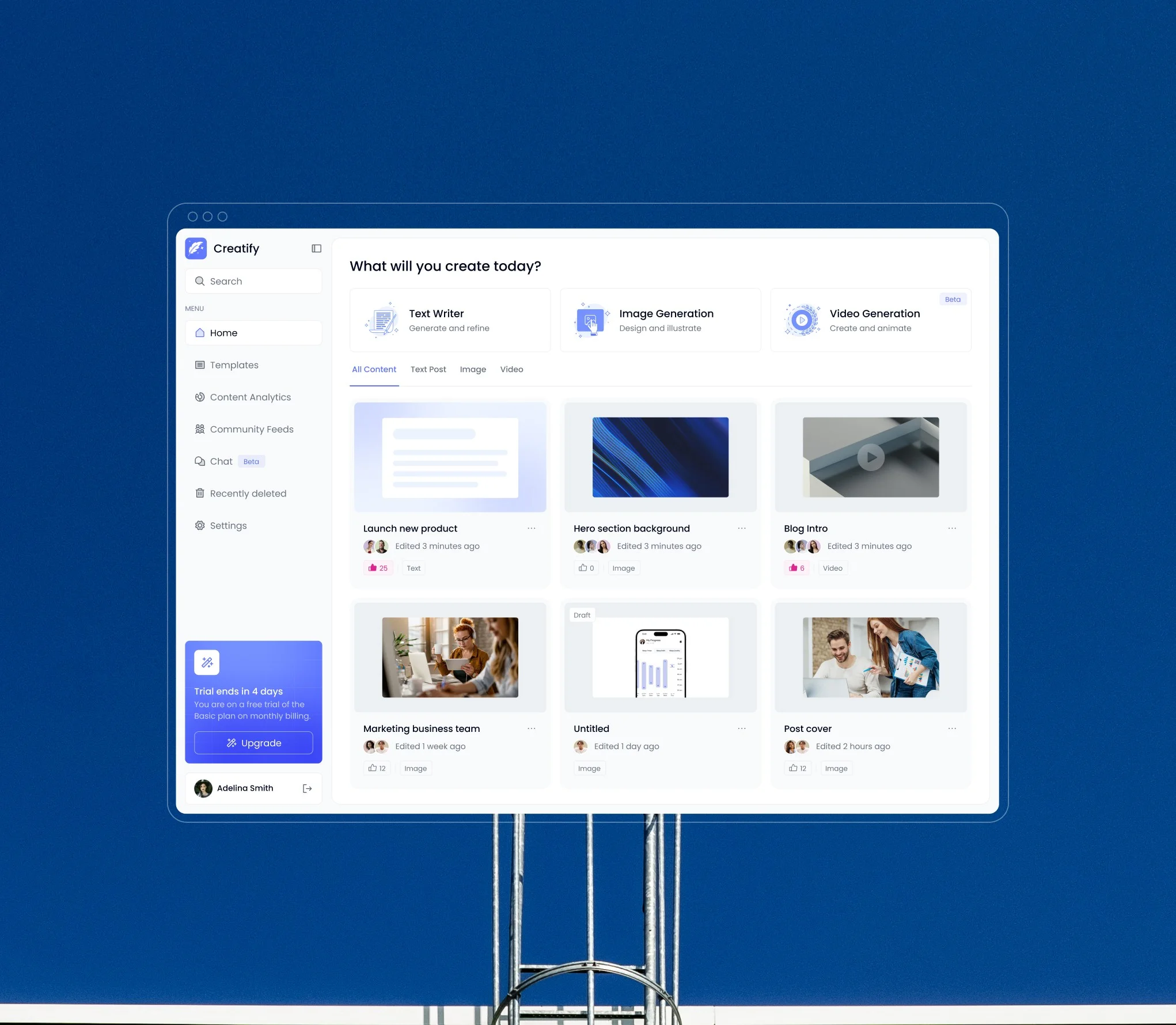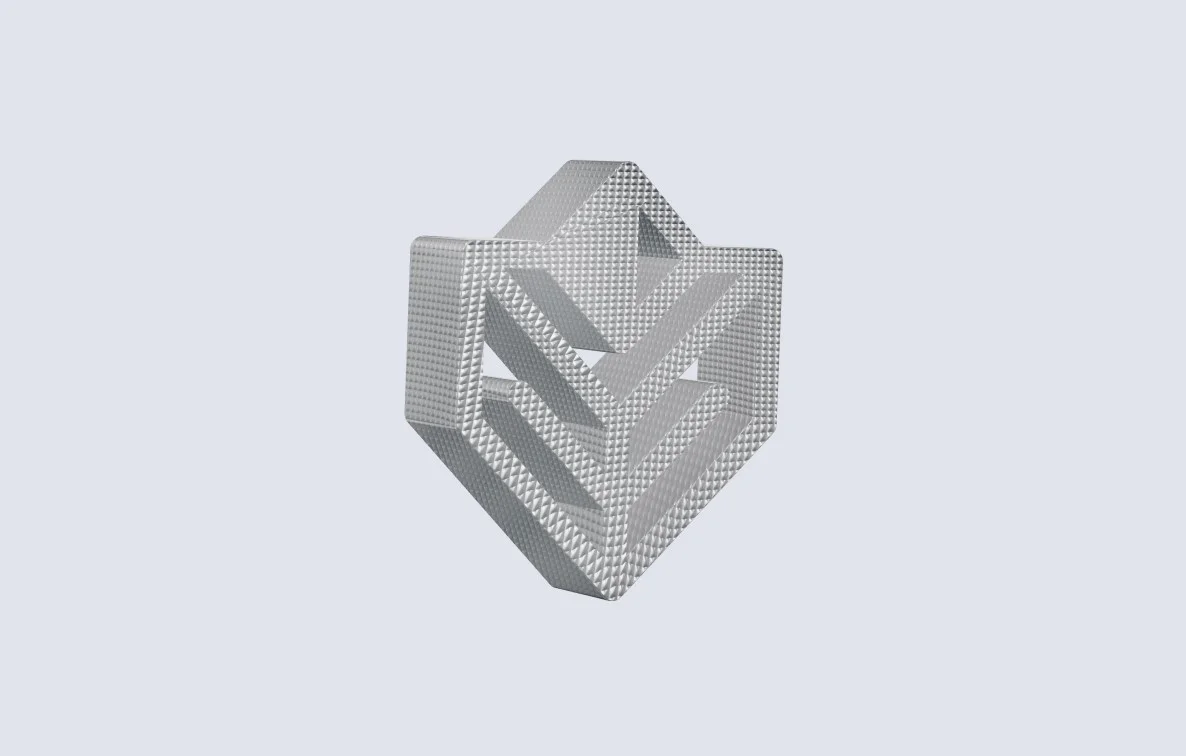Picture this: you’re driving on a well-planned route — your navigation is set, the road is clear, and every turn is expected. You’re making steady progress without unnecessary stops. But then the GPS loses signal. Road signs vanish. Construction zones pop up without warning. Suddenly, you’re pausing at every intersection, second-guessing the next move, and losing valuable time with every detour.
That’s what it can feel like when you work without a structured, ongoing engagement. You’re constantly starting from scratch — re-briefing, re-prioritizing, and trying to align a team that’s not fully in sync.
A retainer model changes that. It gives you a consistent, committed team — the same people who know your product, your priorities, and how you like to work. You’re not stopping to renegotiate the route; you’re moving forward, week after week, with fewer errors and faster execution. The scope can shift, but the path is clear.
That’s the essence of a retainer contract. It’s the comfort of knowing you have a set place, no matter how crowded things get. It’s about predictability, priority, and consistency.
In this article, we’ll break down everything you need to know about retainer contracts — how they work, how they differ from other models, and when they might be the right fit for your projects.
What is a retainer contract?
A retainer is a fixed monthly agreement that secures a set number of hours for you, anywhere from 20 to 100 hours, depending on your needs. You’re not paying per task or chasing down availability — you have a reliable, experienced team on call each month.
💡 Let’s say an online jewelry store partners with an agency on a monthly retainer. Every month, the agency’s team helps the store with a mix of development and design.
Here’s what a typical month might include:
- Fixing several minor visual bugs on the website
- Developing a new upsell pop-up feature triggered when a product is added to the cart
- Redesigning the Rewards Program page for better UX
- Designing a set of banners for a targeted ad campaign promoting the new collection
- Performing monthly website testing to catch errors before users do
- Optimizing the checkout page speed to reduce cart abandonment
- Implementing selected recommendations from the SEO team
What makes a retainer different from project-based work is the flexibility: the client doesn’t have to open a new contract for every request. Instead, the digital agency allocates a specific number of hours (or tasks) each month to the client, prioritizing the most valuable work at the moment.
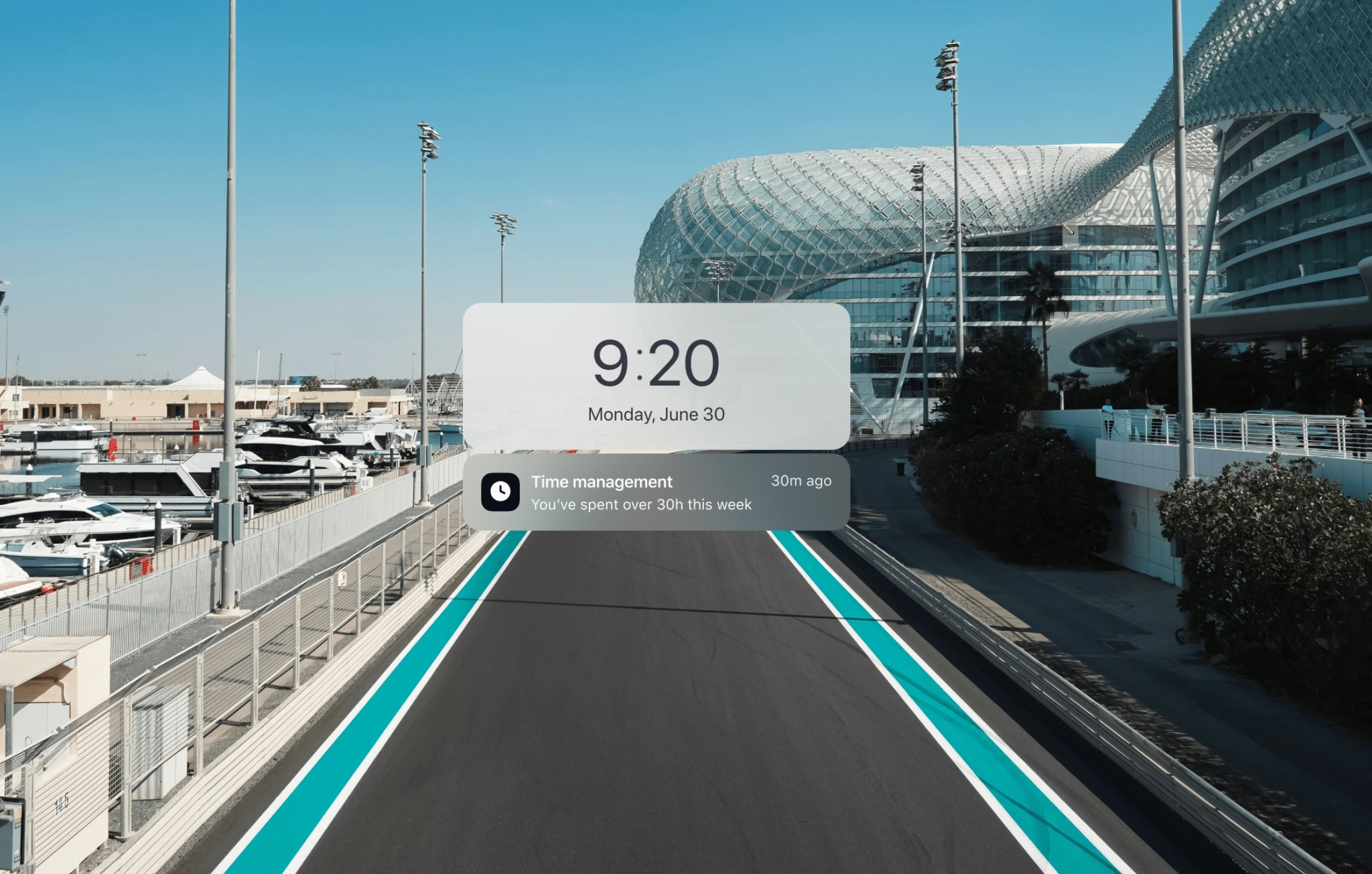
How a retainer contract works
A retainer contract is similar to a monthly subscription, but instead of software, you’re getting time from a skilled tech team. Here’s the gist (after you negotiate all the details):
- Depending on your needs, your retainer can cover different roles — including a developer (WordPress, Shopify, Webflow), UI/UX designer, graphic designer, QA engineer, project manager, or SEO specialist. You get access to the right people at the right time, without having to hire or brief someone new.
- You sign a long-term agreement (usually 6–12 months).
- Each month, you get a guaranteed number of hours from the team. Depending on the scope of work and the project, the monthly retainer can cover anywhere from 20 to 100 hours of the team’s time.
- The team can work on any tasks you need: website updates, ongoing technical support, or any design improvements — all within that budget.
- If there’s extra capacity and you need more done? You can scale up the hours (and the budget) for that month.
- Hours are not tied to one specialist. In one month, you might use 10 hours of developer time, 5 hours of design, 3 hours of QA, etc. You get a flexible setup that adapts to your priorities.
💡 A retainer gives you ongoing resources to grow your product — without the overhead of building your own team. At the same time, you get flexibility and ongoing support.
How our services fit the retainer model
Web design & web development: Keep your site fresh, functional, and performant without spinning up a new project every time.
Think: landing page iterations, speed optimizations, new sections for campaigns.
Development support: You get devs who already know your stack and your business, so you can move forward without the usual friction.
Think: integrating new APIs, fixing bugs, implementing features, improving performance.
Testing & QA: Keep your product stable, smooth, and user-ready — without spinning up a separate QA cycle every time.
Think: regression testing after updates, usability checks before launch, ongoing test coverage improvements.
Consulting & product guidance: You’re not just paying for hands — you’re getting brains, too.
Think: identifying what to fix or build next, making tech decisions easier, turning business needs into dev-ready tasks.
Branding: Ongoing brand care — from decks to deliverables — with no loss of consistency or time.
Think: supporting your online presence with a unified style, graphic design
UI/UX: Constant improvements based on data and feedback.
Think: improving conversion flows, redesigning specific screens, or tweaking interactions.
Motion & 3D: Keep content dynamic without needing to start from scratch.
Think: campaign animations, explainer updates, product visualizations.
E-commerce: Keep the checkout smooth and the product catalog updated.
Think: new payment integrations, flash sale landing pages, mobile optimization.
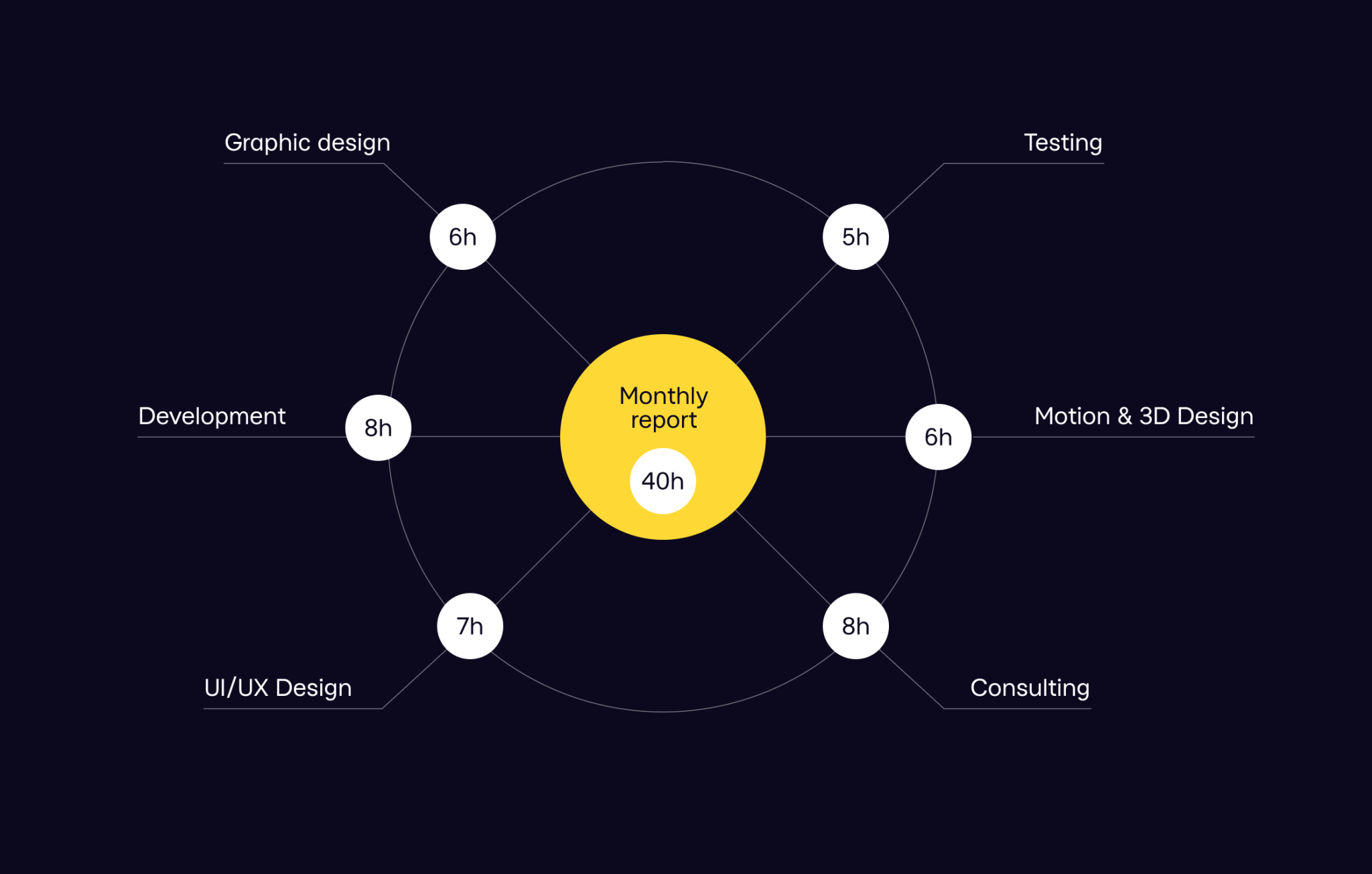
Why more companies are choosing a retainer contract today
Retainers may work best not for startups, but for businesses that have moved past the early chaos and are focused on scaling with clarity. Most of our clients fall into this category — whether it’s an ecommerce brand preparing for high seasons or a B2B tech company managing an evolving product (like a SaaS platform or a digital service business). Here’s how a retainer model helps:
Need for fast, aligned execution
A retainer becomes especially valuable after the main development is done — when you want the confidence that your product will keep running smoothly and reliably. The team, made up of the same specialists who built your project, stays on board to monitor performance, carry out regular maintenance, and step in quickly if something breaks or needs fine-tuning:
- The same developers who built your product stay involved. They know the architecture, the logic behind each decision, and how the pieces fit together — which means new features are delivered faster, with fewer bugs and less back-and-forth.
- Your designers already understand your product, audience, and goals. Instead of starting from scratch, they build on existing research and guidelines, creating designs that move the business forward with less friction.
- A QA specialist who knows your product inside and out doesn’t waste time guessing. They follow established checklists, know your key flows, and can spot issues before they reach your users.
- With a project manager who understands your context, priorities, and working style, communication becomes easier. No need to re-explain things — they help the team move quickly and offer practical solutions along the way.
💡 It’s the difference between restarting the engine at every corner and staying in motion. With a retainer, you get a steady, high-performing team, which means faster implementation and higher quality. You save time and avoid costly mistakes, while your users enjoy a more stable product.
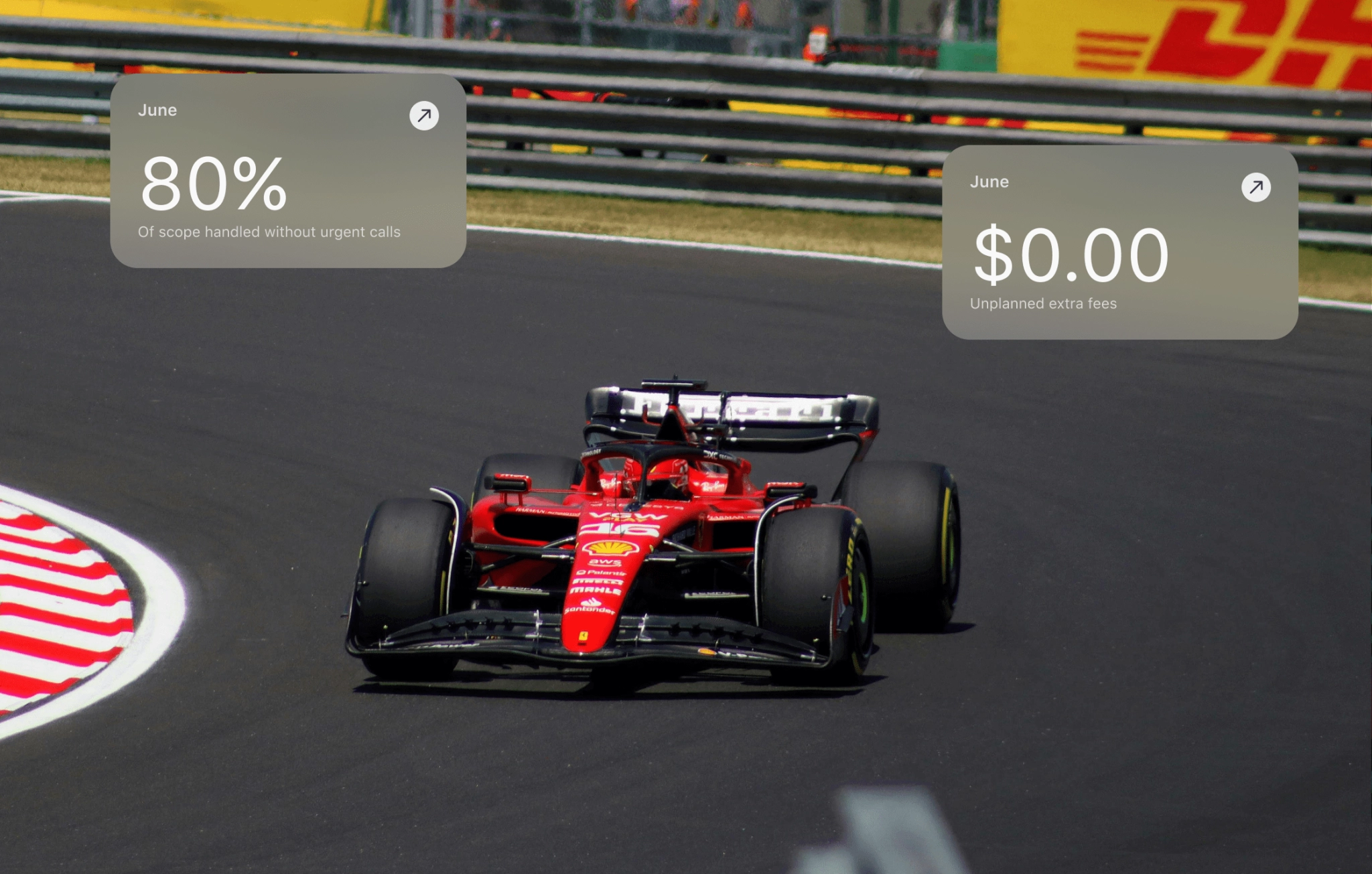
Talent consistency
Hiring new contractors every time brings more than just logistical overhead. It means extra time spent on onboarding, variable code quality, missed expectations, timezone mismatches, inflexible contracts, and legal uncertainties. What seems cheaper at first often becomes more expensive in the end — in both time and results.
💡 A mid-sized healthtech company was building a patient dashboard. To stay lean, they hired freelance developers on a per-feature basis. One developer disappeared mid-sprint due to personal issues; another was in a timezone 8 hours apart, delaying urgent fixes by a day or more. Each time they switched contractors, they lost velocity and stakeholder trust.
While one-off hires may seem cost-effective, the hidden costs of inconsistency and delays can quickly outweigh the savings. A stable, long-term partnership through a retainer delivers stronger outcomes with fewer surprises.
Real Valmax cases
The retainer model isn’t just theory — it’s how we help companies move faster and work smarter. Here are two real examples from Valmax clients:
1. Keeping the old running while building the new
A tech company came to us with a big project: a complete website rebuild. But their current site was still live and mission-critical. Instead of risking downtime or splitting focus, they chose a 30-hour monthly retainer. While our core team built the new site, we supported the old one — fixing bugs, keeping things stable, and making sure nothing broke along the way.
2. On-demand design without the overhead
A growing marketing agency needed ongoing design work — ad creatives, landing pages, case studies. But hiring in-house wasn’t cost-effective or scalable. The agency signed a retainer contract for 50 hours/month. This gave them reliable access to our design team, faster turnarounds, and consistent quality. No hiring delays. No surprise costs. Just solid, on-brand visuals, whenever they needed them.

Retainer vs. other IT engagement models (outstaffing, outsourcing, dedicated team)
Many small businesses partner with managed IT services companies to reduce in-house tech overhead. And we get it — even a retainer contract is just one of several outsourcing partnership models. Depending on your needs, a different approach might suit you better. Here’s a quick comparison to help you make an informed choice.
Outstaffing
Outstaffing is a hiring model where a specialist (or several) works exclusively on your project, full-time — but is officially employed and managed by the agency. You don’t need to handle recruitment, contracts, HR, or retention — an IT outstaffing company takes care of that. You simply get a dedicated professional who integrates with your team as if they were in-house.
💡 For example, you run a growing SaaS product team. Your developers are shipping fast, but your QA engineer is stretched thin and bugs are slipping into production. Rather than slow down or search for weeks to hire someone new, you bring on a nearshore team member via outstaffing — QA specialist. They’re dedicated to your team, work in your tools, and report directly to your product manager — while the agency handles all the operational and legal aspects in the background.

Think of it as bringing in a skilled crew member mid-race. Your car is already on the track, the pace is set — and what you need isn’t a full reset, but a reliable specialist who can jump in and keep things running at speed.
When it fits best:
- You already have a strong product vision and just need execution support
- You have an in-house team but need extra hands to meet deadlines
- You need a specific skill (e.g. UI design, front-end dev) executed long-term
Outsourcing
We often start projects through outsourcing before moving to a retainer model — a classic project-based collaboration where we take your idea from A to Z: scoping, design, development, testing, launch. It’s a focused delivery model with a clear end goal and timeline.
Unlike outstaffing, where a company essentially leases talent, IT outsourcing companies give access to a well-structured delivery process.
This includes:
- Project managers, team leads, and art directors
- Established workflows and documentation practices
- Diverse expertise across disciplines
- Scalability based on project needs
As a result, the quality tends to be higher — especially for businesses that don’t want to build and maintain an internal team. With outsourcing, companies avoid the typical burdens of in-house hiring:
- No recruitment or onboarding
- No need to manage replacements, vacations, or sick leave
- No responsibility for salaries, payroll taxes, or software licenses
- No internal training or retaining costs
💡 For example, a growing B2B SaaS company knew their website no longer reflected their product’s maturity. But with no in-house designers or developers — and an internal team already stretched thin — they couldn’t afford to manage freelancers or slowly hire a full product team. Instead, they outsourced web design to a partner agency: from strategy and UX to design, development, and launch.

When it fits best
- You have a clear, one-time project (e.g. website redesign, branding package)
- You want to hand off execution and focus on results, not day-to-day management
- You need external expertise and don’t want to manage the logistics of a full-time team
- You’re okay with less control as long as the outcome matches the brief
- You need flexibility in resources — the agency can scale up or down based on the project requirements.
Dedicated team model
A dedicated development team is a group of specialists who already know how to work together, aligned in their rhythm, tools, and communication. Unlike outstaffing, where you assemble individuals one by one and manage the onboarding yourself, a dedicated team comes ready to go. That saves you time and reduces friction from the start.
💡 For instance, imagine you’re building a new product or a major feature for your business. You need a specialized design and development team to make it happen, but you don’t want to go through the hassle of hiring individual freelancers or full-time employees. Instead, you hire a dedicated team through an agency, which assigns developers, designers, and testers to work on your project full-time. The team works with your internal team, focusing solely on your product.

When it fits best
- You have a large or long-term project that needs focused, ongoing attention
- You want a team that feels like an extension of your company
- You need multiple roles covered (e.g. designer, developer, PM) without hiring in-house
- You have enough internal capacity to manage priorities and direction
- You’re ready to invest in a high-commitment setup to ensure quality and speed
How is the retainer model different?
Once the main development is done (usually through outsourcing or another model), we often shift into a retainer model to provide long-term, consistent support. This isn’t an alternative to outsourcing — it’s the natural next step. You wouldn’t build an entire product on a retainer alone. But you also wouldn’t want to lose reliability once the product is live.
Ongoing vs. one-time
Outsourcing is typically project-based or short-term, focused on completing specific tasks or deliverables, like a new website or feature rollout. A dedicated team, while more integrated, often focuses on intense project phases.
Retainer contracts, on the other hand, are built for ongoing collaboration. They support evolving needs like website maintenance, regular design & content updates — perfect for businesses that value continuity and proactive support.
Predictable cost
Outsourcing and outstaffing are billed hourly. Dedicated teams often involve a fixed monthly commitment — not always large, but consistent — usually based on an agreed hourly cap.
With a retainer, you have a predictable monthly fee, making it easier to plan your budget and avoid unexpected costs — a major advantage for businesses that rely on consistent support.
Priority and flexibility
With outsourcing, the level of focus depends on the project scope — larger, time-intensive projects often get full-time attention. By definition, oustaffing typically means you get dedicated specialists for your project, even if they’re technically hired through an agency. Dedicated teams, meanwhile, offer full focus by design, but usually come with a fixed monthly commitment and less flexibility.
Retainer clients, however, often get priority support, with faster response times and more room to adjust as needs change. With a steady, ongoing partnership, you can count on your team to step up when urgent tasks come in.
| Model | Control | Budget predictability | Talent consistency |
| Outstaffing | High — you manage day-to-day work | Medium — hourly/monthly | High |
| Outsourcing (including retainer) | Medium to high | Medium — depends on scope; high for retainer — fixed monthly fee | Medium |
| Dedicated team | High — fully integrated with your team | Low — high monthly cost | High — consistent team over time |
When to choose each model
▶️ Retainer Contract: If you need regular support for ongoing tasks, like website updates or maintenance, monthly content creation, without the overhead of managing a full team.
▶️ Outstaffing: Outstaffing works well when you need skilled professionals on your team, but don’t want to go through the full hiring process. You get a reliable, pre-vetted specialist who’s ready to work on your team — often faster than if you were hiring yourself.
▶️ Outsourcing: When you need a project handled end-to-end without worrying about day-to-day management. Ideal for one-time projects like a website redesign or brand refresh, where you want a hands-off approach.
▶️ Dedicated Team: If you have a large, ongoing project with constantly evolving requirements and want full control over the team.
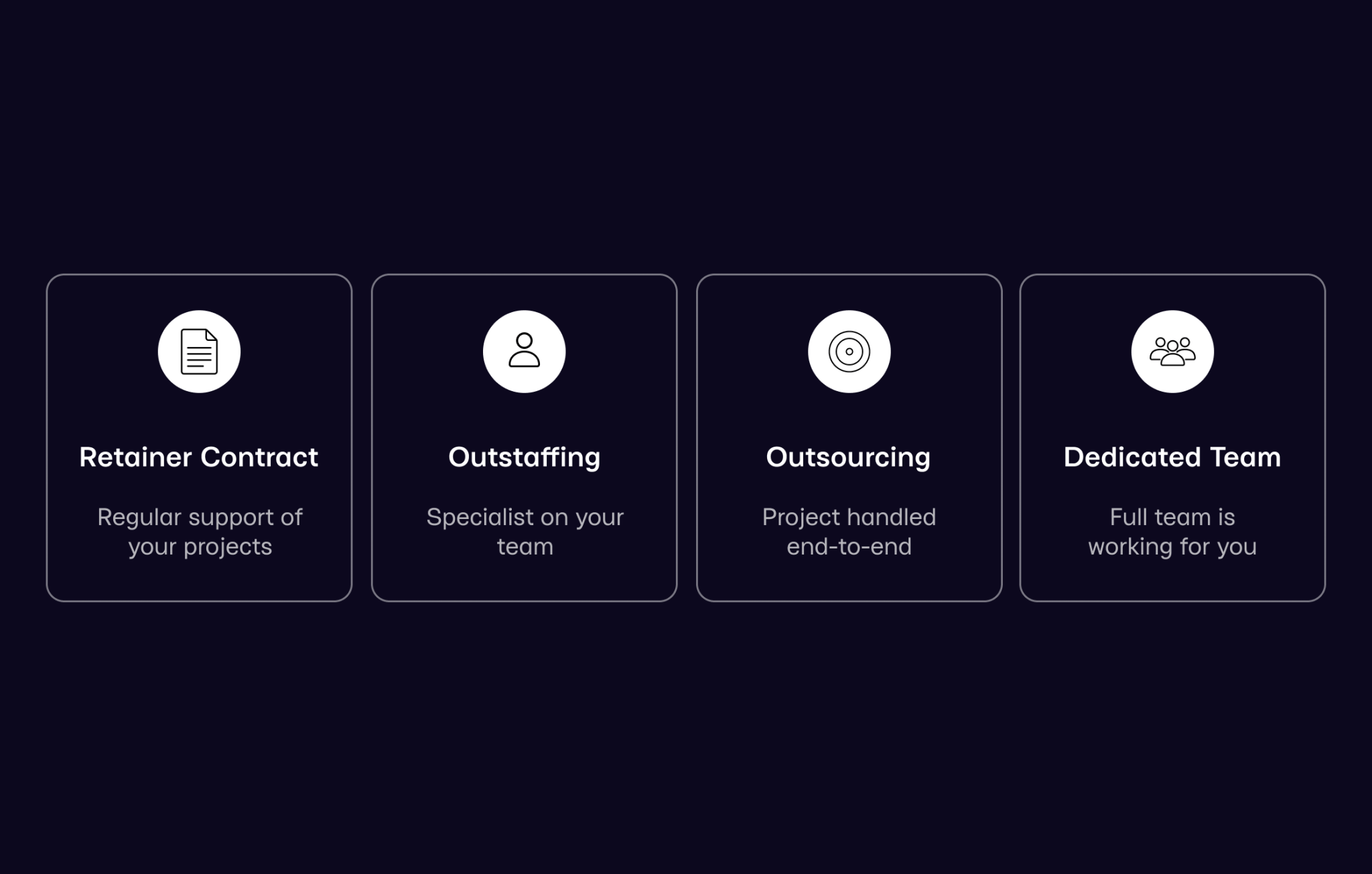
How we help you choose and shape the right model
Choosing the right collaboration model is about finding the setup that matches your goals, work style, and the way your team likes to collaborate. Here’s how we guide you:
We start with your goals
What you’re working toward directly informs how we structure the work, how deep we go, how flexible we need to be, andwhat kind of team you’ll need.
We look at the bigger picture
Your current needs are only part of the story. We also look at your team size, internal capabilities, decision-making structure, and growth plans — because these shape how work actually moves forward.
We walk you through options
Once we understand your goals and context, we’ll help you navigate the options — not just in terms of pricing, but in how the collaboration is set up and managed in practice. We discuss how responsibilities are divided, how communication flows, who manages what, how we scale the team (or not), and so on.
So, it’s not just “what you’re paying for,” but “how the day-to-day and long-term working relationship will run.”
We shape the right model
💡 For example, many clients come to us not just wanting a deliverable — like a website or e-commerce platform — but ongoing support. They want to build their business without being left alone with a finished project and no guidance.
That’s why we often offer a retainer-based model — let’s say 20–30 hours dedicated to your project. These hours aren’t lost on vague “support” — they go directly into moving your business forward: improving the website, scaling your e-commerce, or evolving your online presence. Your project stays alive while you keep full clarity and control over how those hours are spent.

GET A TEAM THAT’S ALWAYS ON YOUR SIDE
Retainer Contract gives you reliable support whenever you need it
Your questions, answered
Is a retainer model more expensive?
No — you pay a set amount per month based on an agreed scope, so your budget stays predictable. Anything outside that scope is only discussed if new needs come up.
What’s the minimum commitment for a retainer model?
We typically start with a six-month commitment, which can be extended or adjusted as we go.
How is a retainer contract different from project-based work?
A retainer contract gives you ongoing access to a team each month, with a fixed number of hours you can use flexibly across tasks and roles, without starting a new contract every time. Unlike project-based work, it’s continuous, faster to execute, and adapts to your evolving priorities.
rate this article
5 / 5.0

based on 5 reviews

